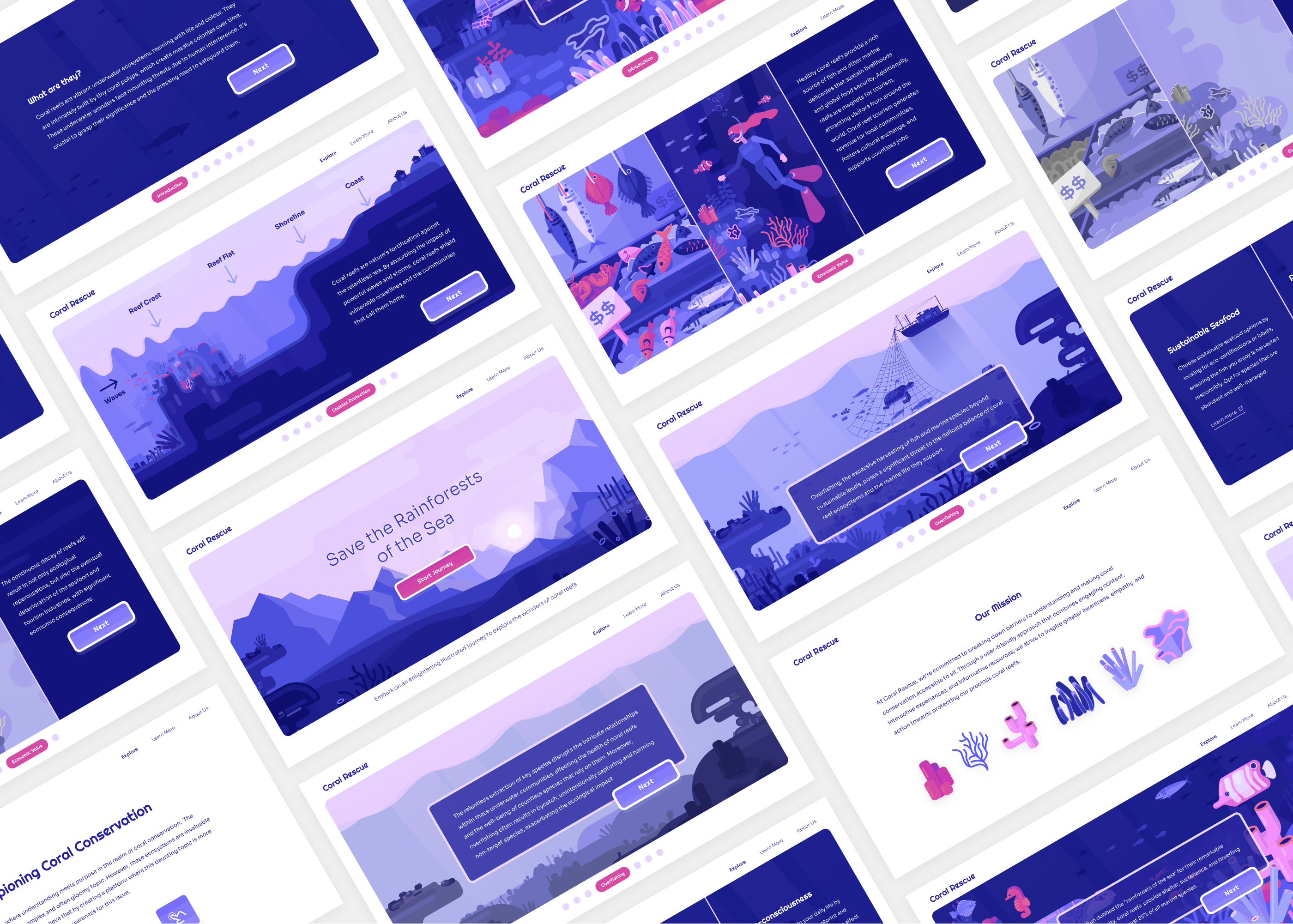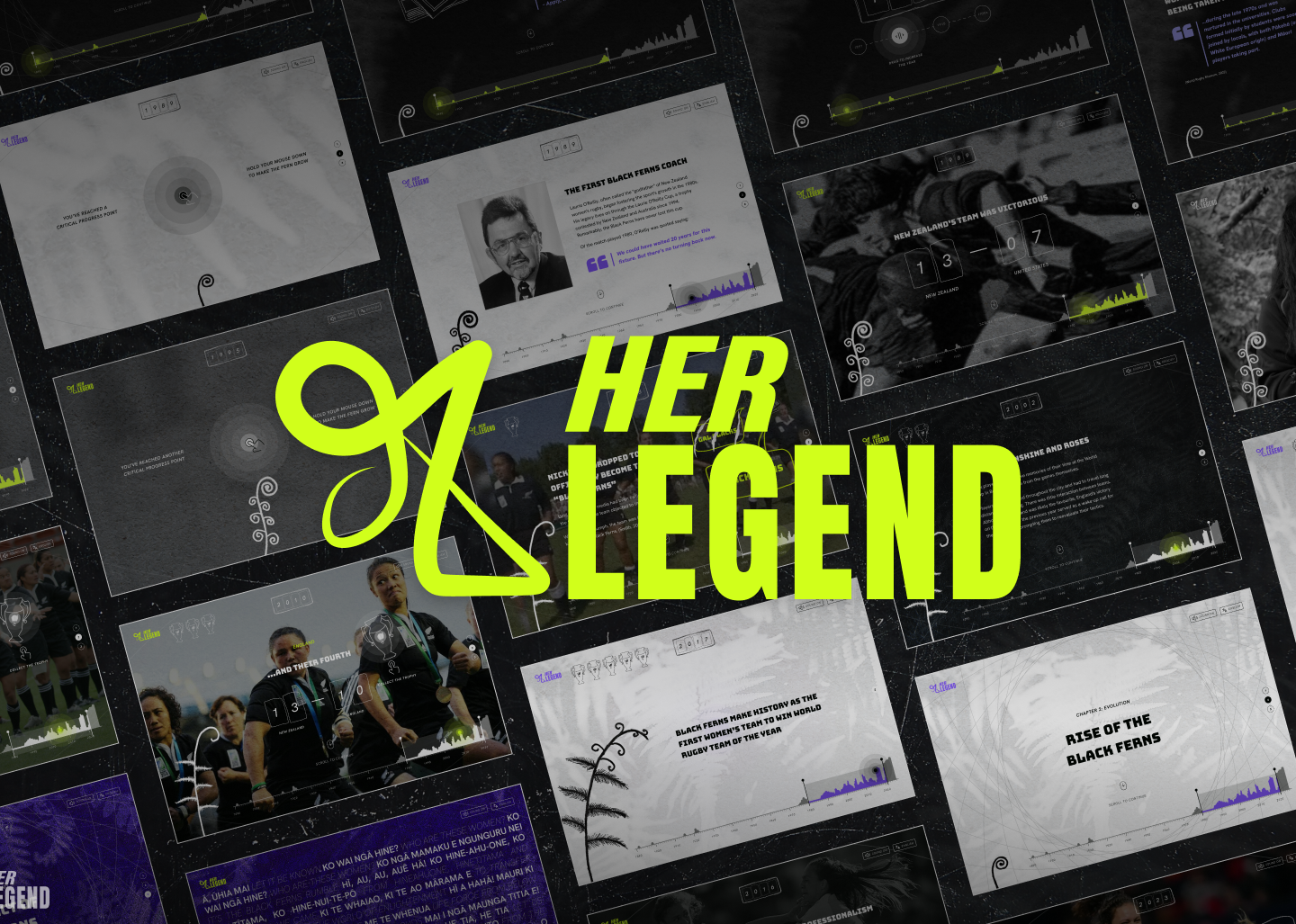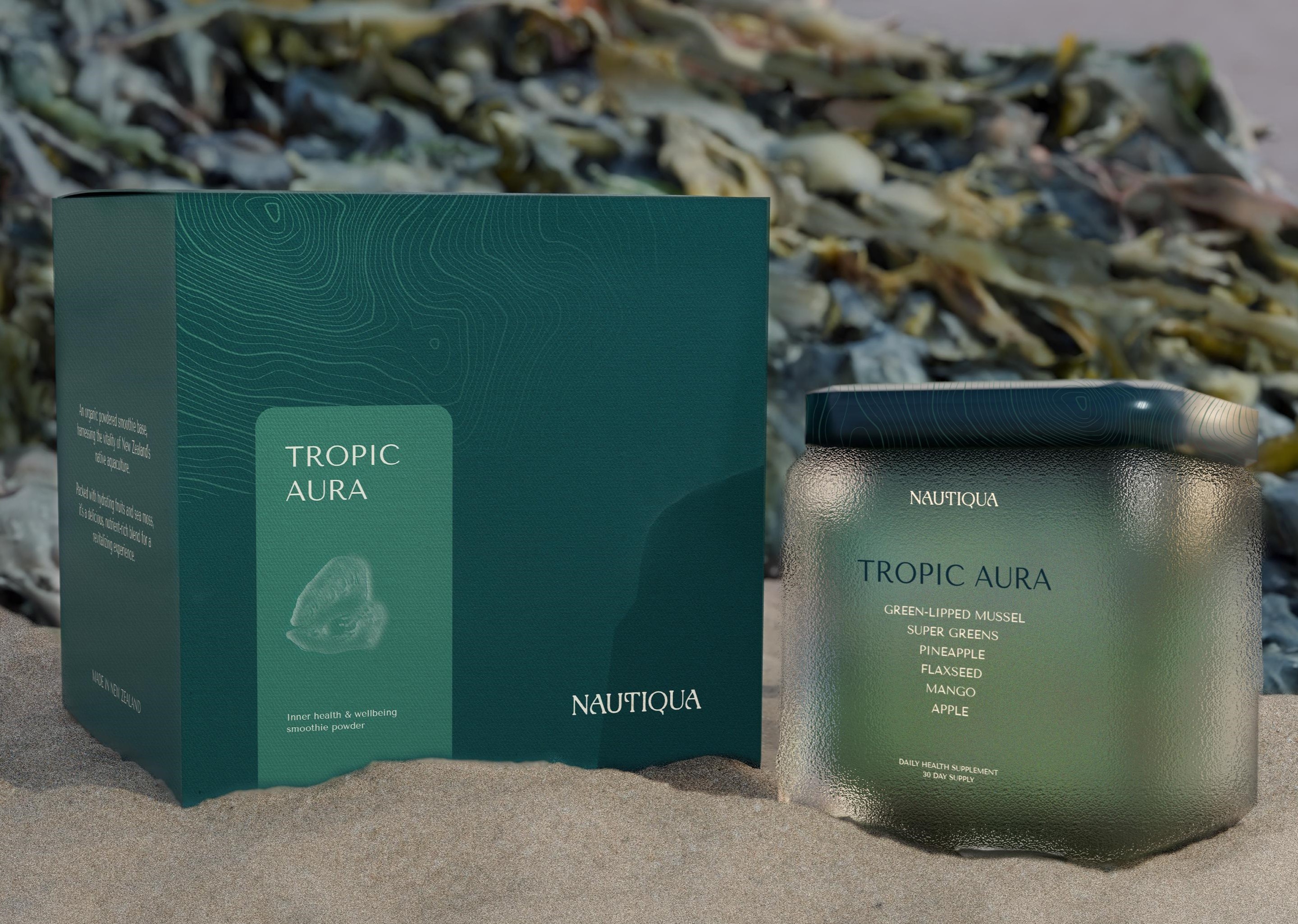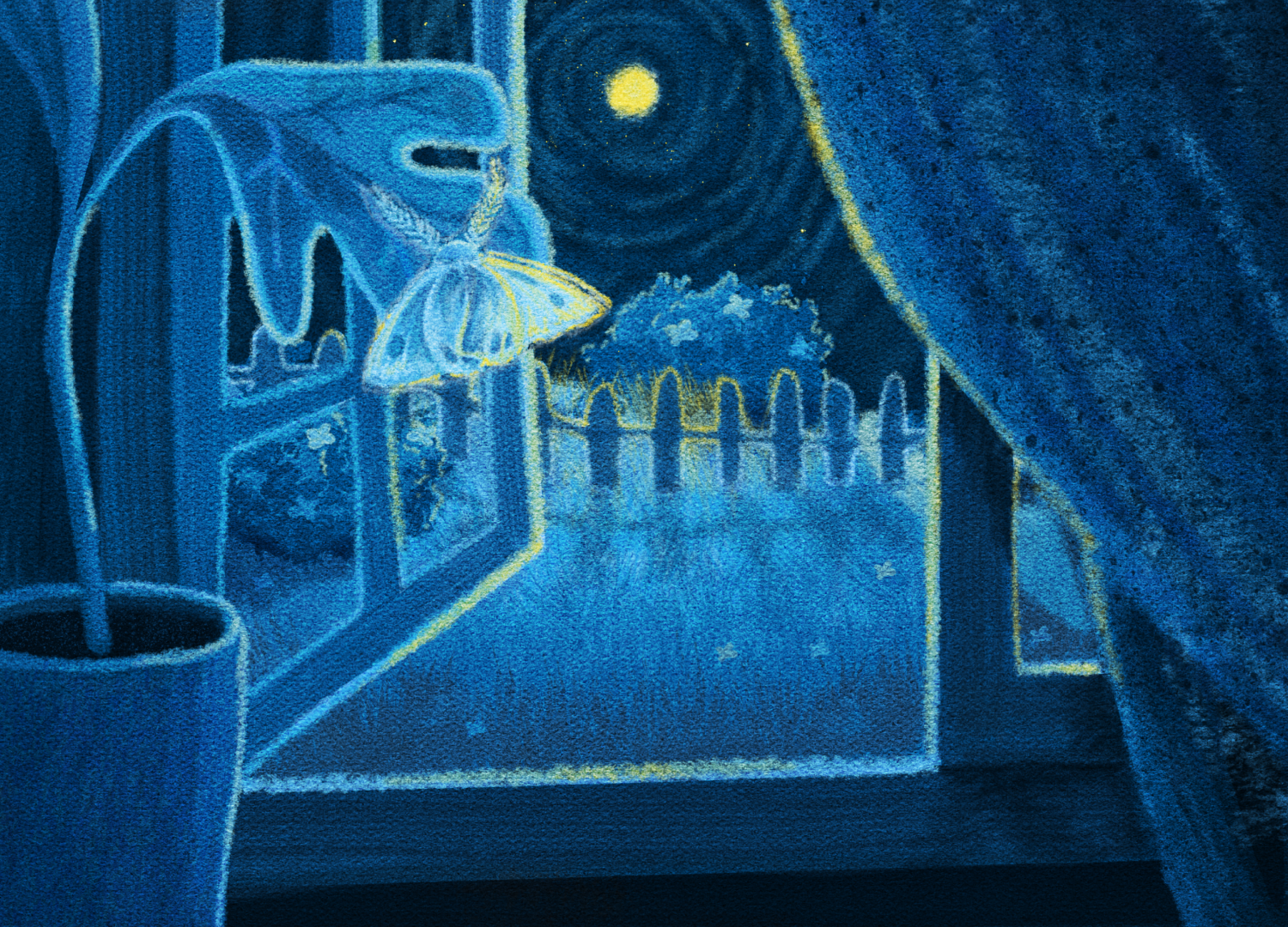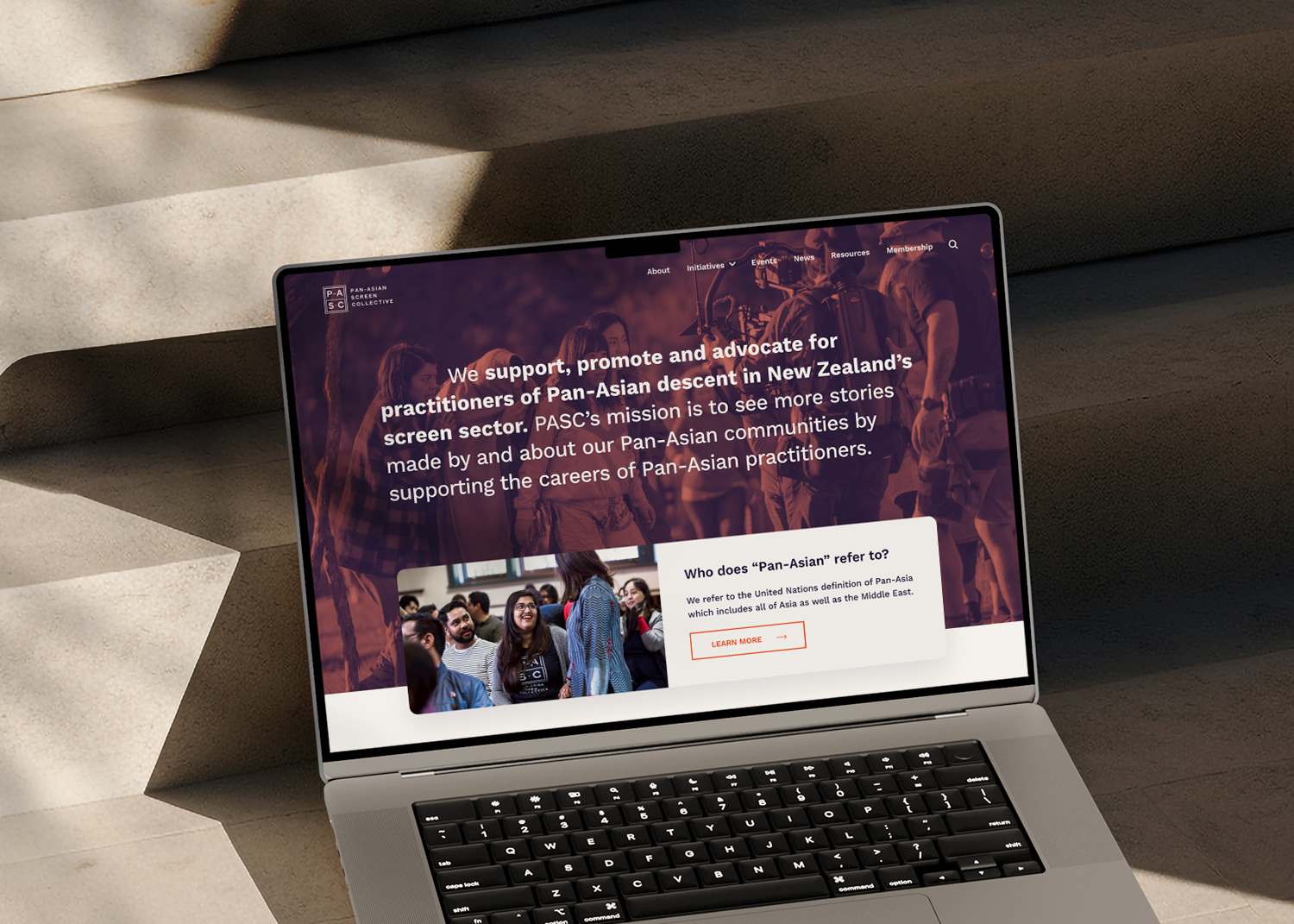Coral Rescue
An illustrated learning experience
My Roles
Tools
Project Duration
Sep 25, 2023 → Nov 17, 2023
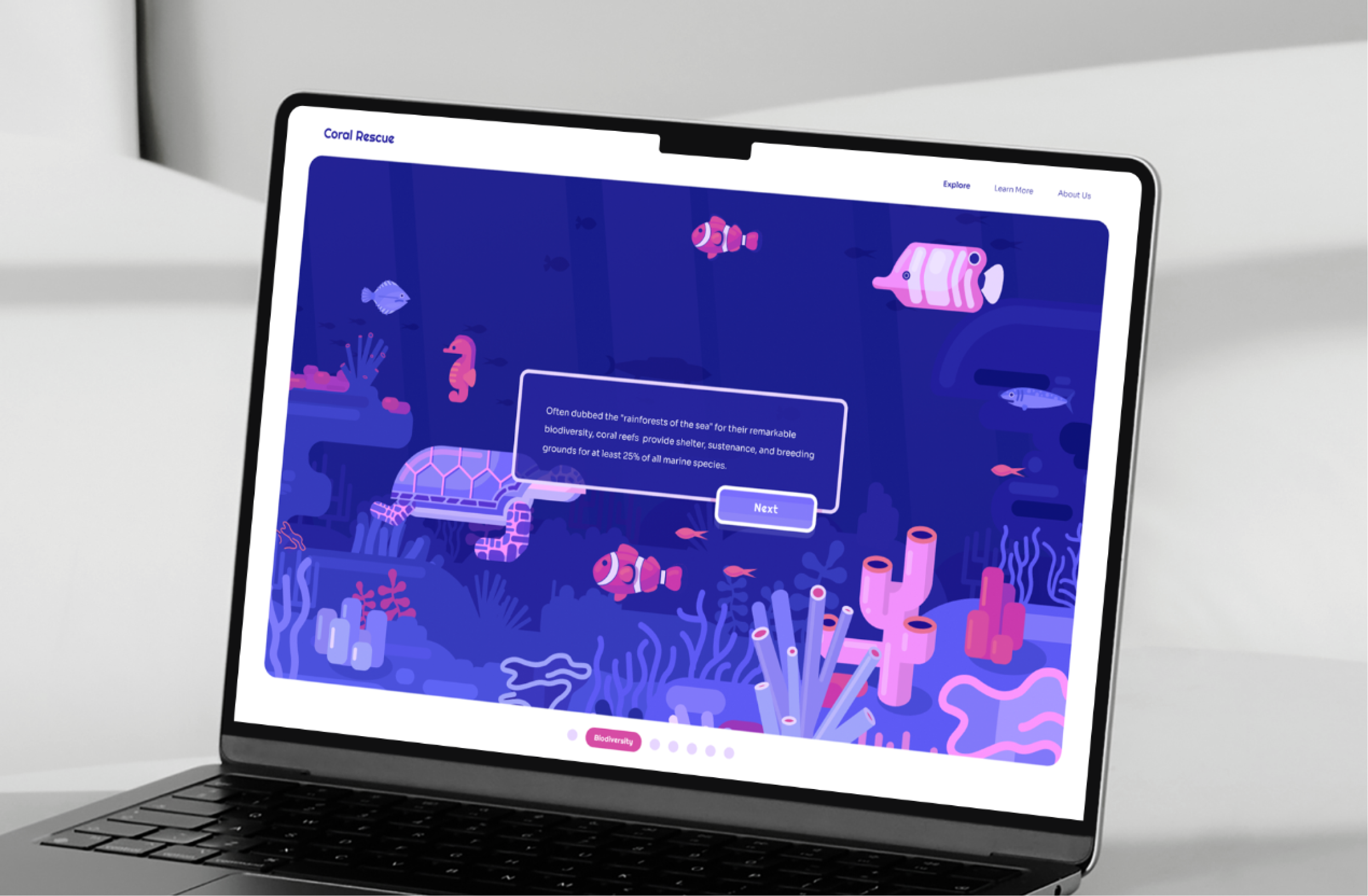
Introduction
The rainforests of the sea need our help
Coral reefs are vital, vibrant underwater ecosystems which are facing continuous deterioration due to human interference. In recognising the complex and often gloomy nature of the subject, the goal of Coral Rescue was to create an educational resource that is both comfortable and comprehensible in order to foster understanding towards this pressing issue.
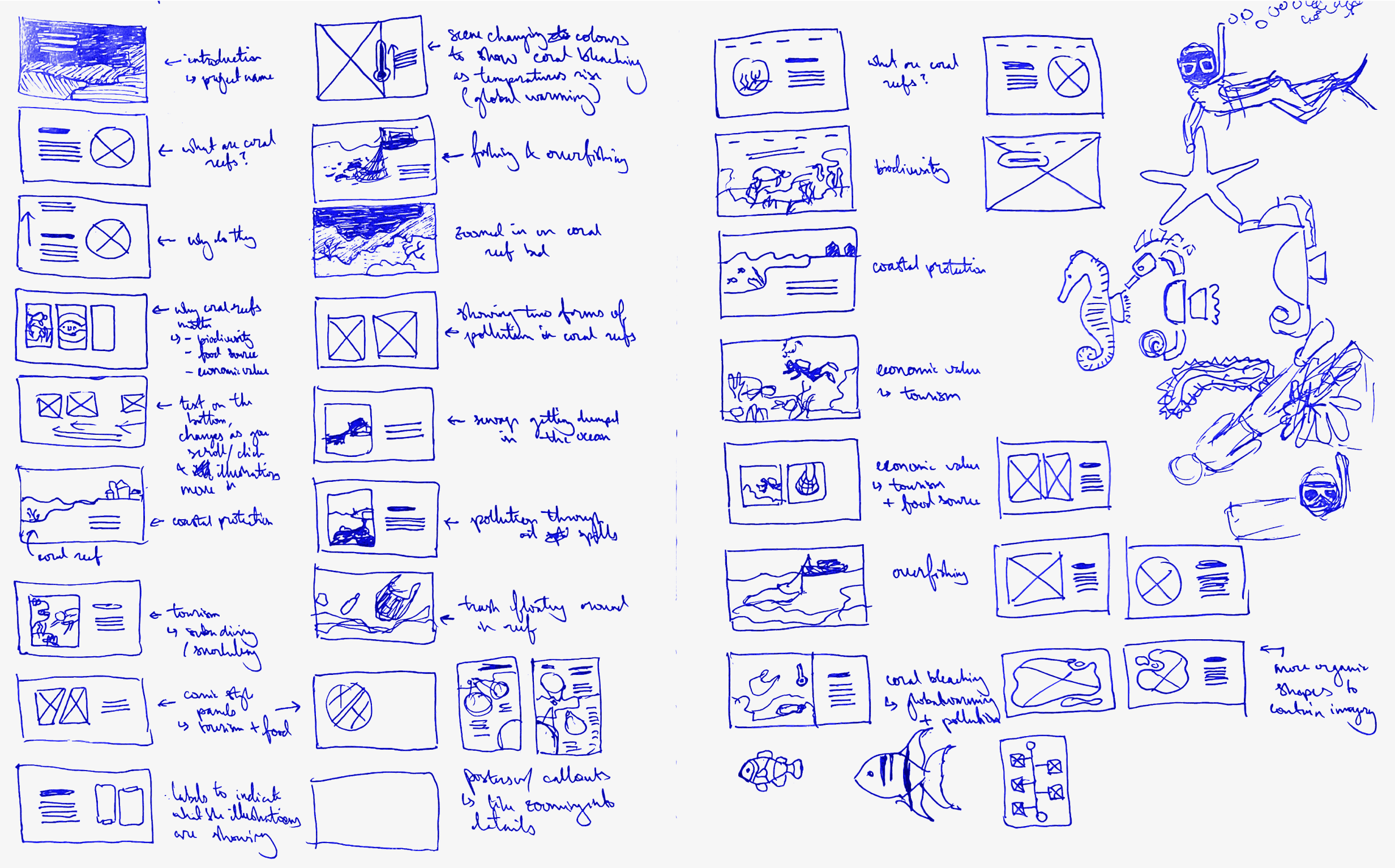
Method
Illustrated for understanding & emotional comfort
Kozak (2020) tested and verified three hypotheses: that illustration triggers memories and makes content more memorable; illustration elicits emotions and makes experiences more pleasurable; and illustration accelerates perception of content.
Additionally, when photos and artworks were compared for emotional responses, the number of pleasant emotions triggered by artworks increased compared to those triggered by photographs of the same subject, while unpleasant emotions decreased in the same way (Yang et al, 2019). For these reasons, illustration was deemed a suitable medium for making the intricacies of coral decline more accessible and emotionally comfortable for a wider audience.
Illustration Creation
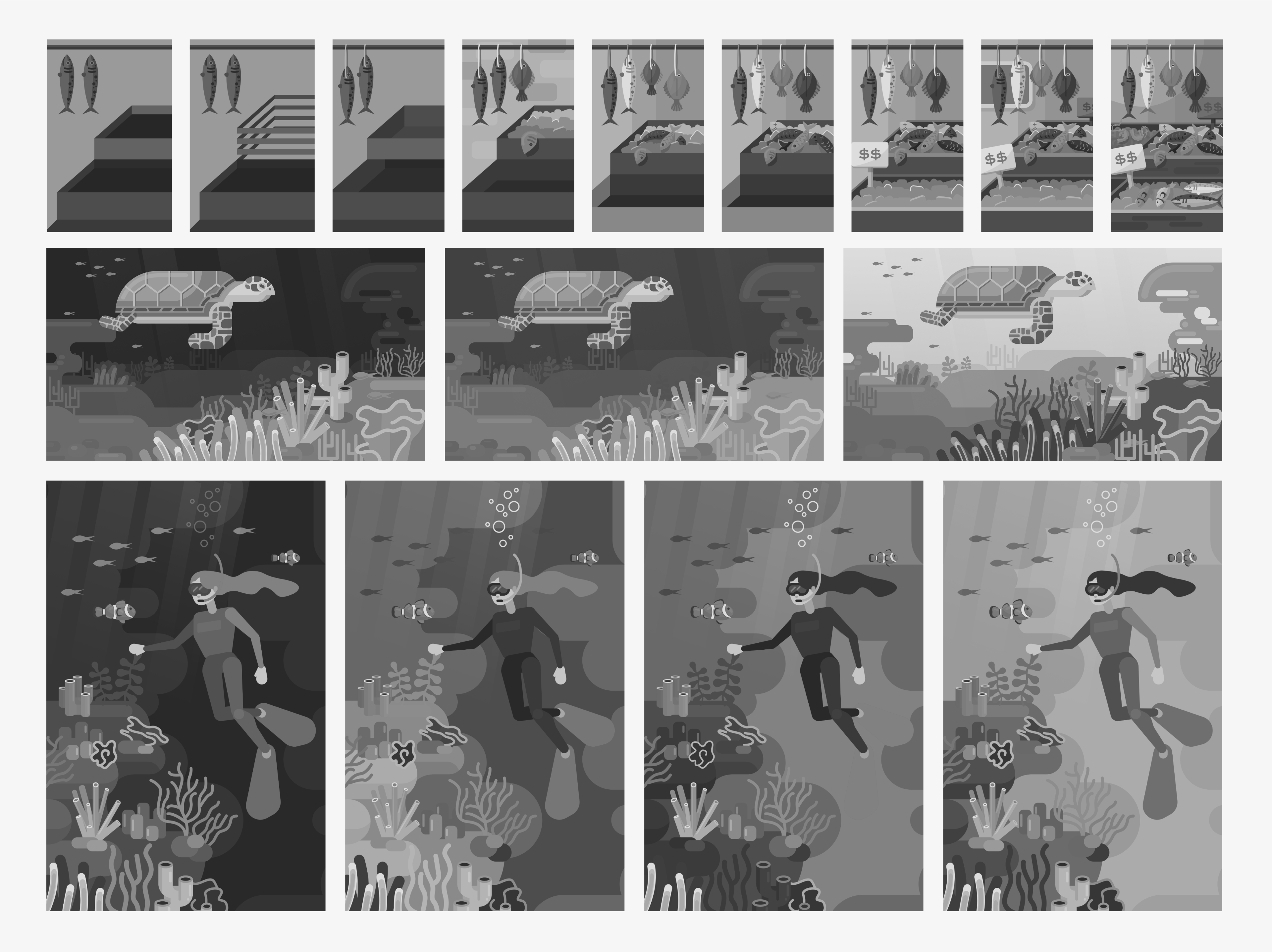
Illustrations were built in vector format to allow for flexibility in creating animations and page transitions. Experimentation then followed to establish a dominant colour and build a palette.
Colour
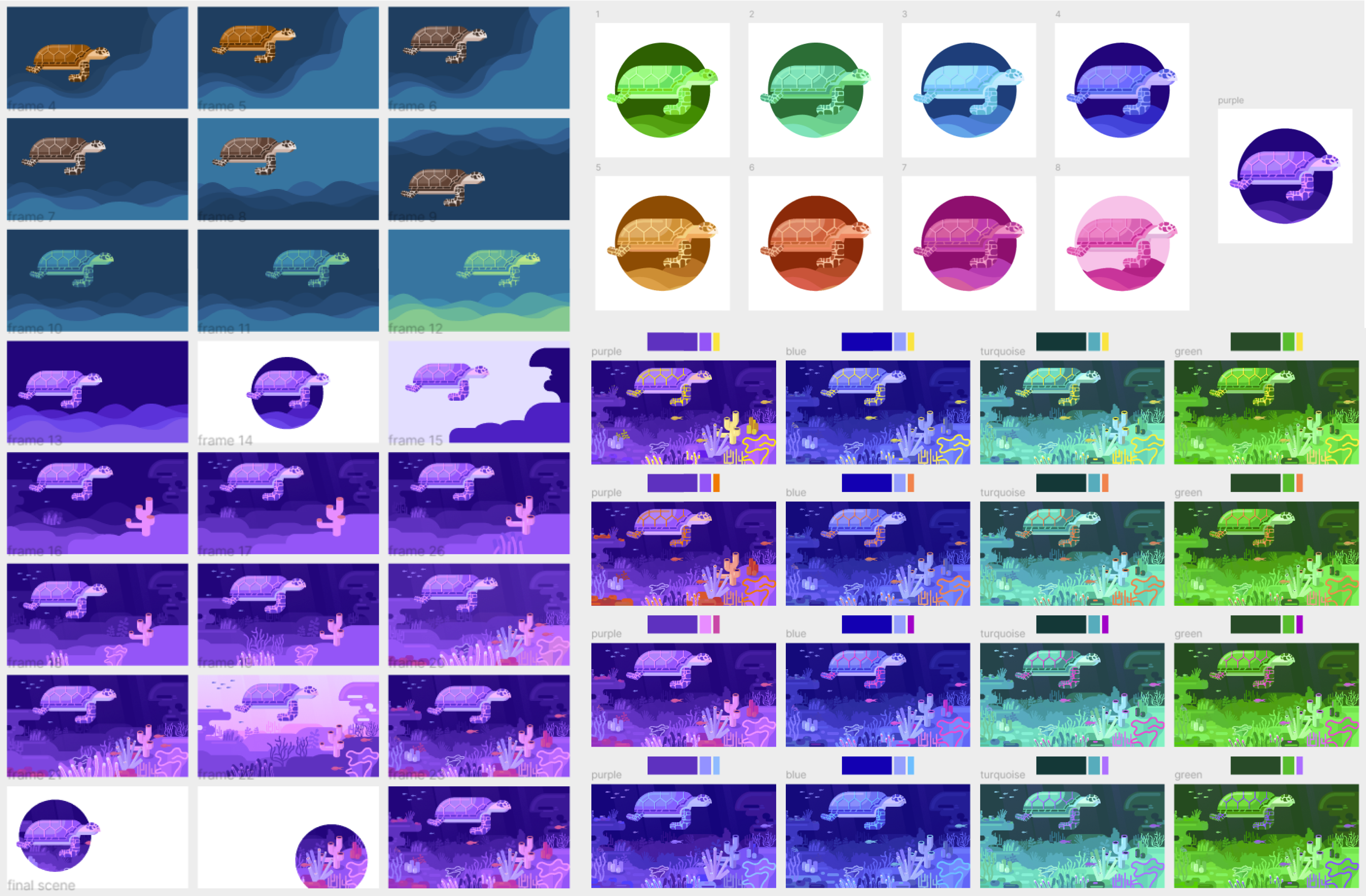
Painted according to comfort & comprehensibility
The reality of our planet’s deterioration can be a daunting topic. With that in mind, the colour palette was crafted to make the information approachable and easy to digest. Blue takes centre stage to provide a calm, stable backdrop. The pink accents serve to draw the eye and infuse additional warmth into the scenes.
Desaturation of colour was utilised to communicate the negative consequences of coral reef decline.
Final Outcome
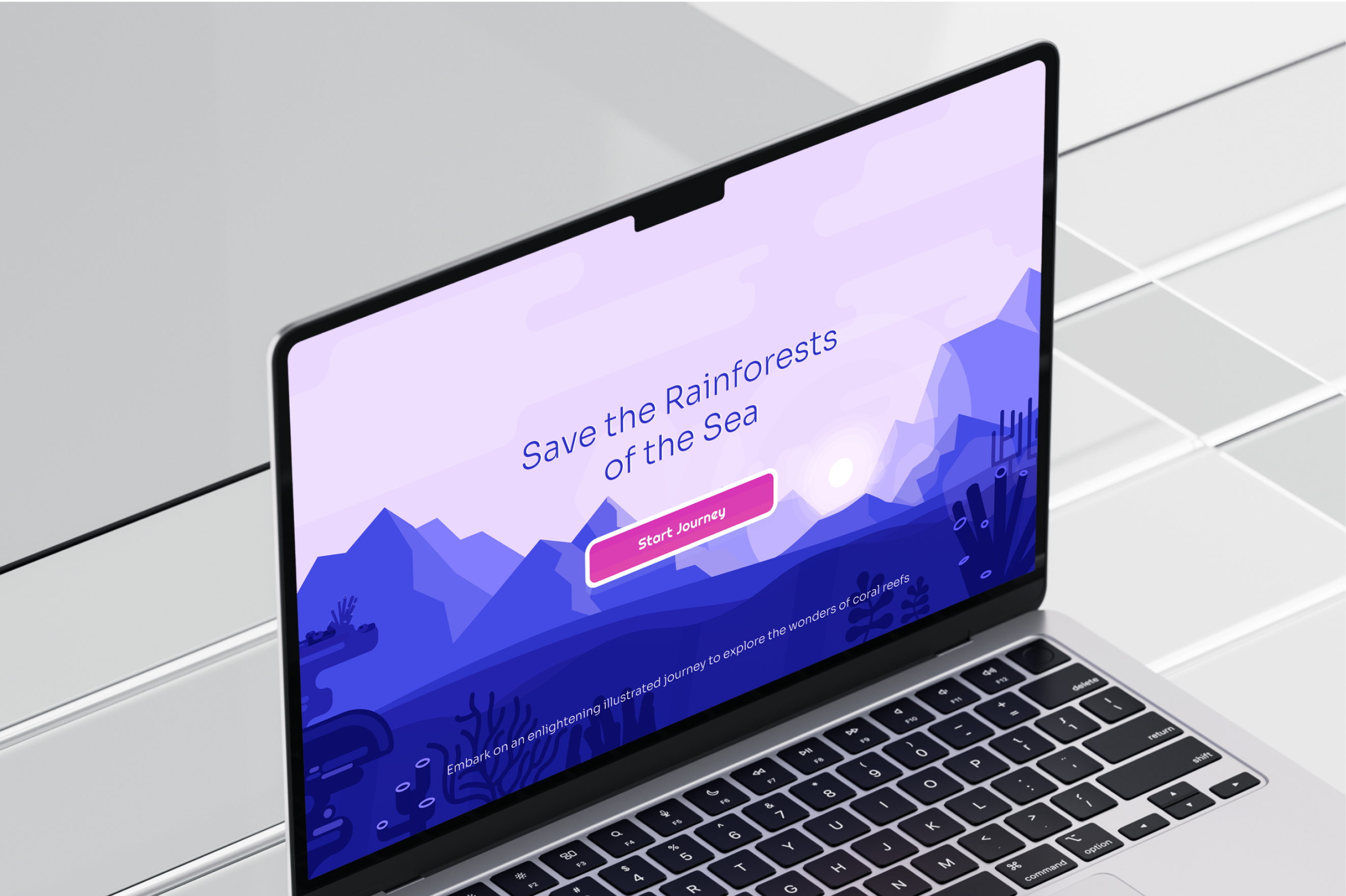
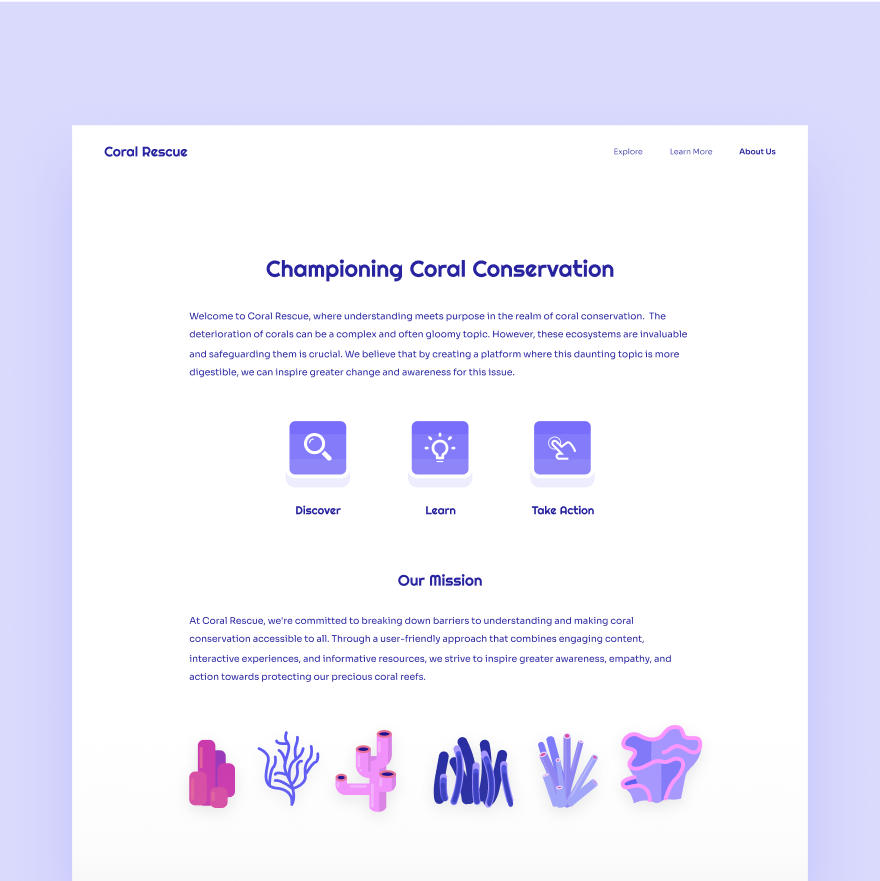
Format
Tailoring to user behaviour & needs
Explainable and promotive illustrations outperform decorational illustrations (Luo & Lin, 2017); in other words, illustrations in a learning context cannot be used in isolation—another form of communication is necessary to explain them.
Guided by this information, I explored different formats which support the combination of illustrations paired with written communication. The website format emerged as the most effective, as it limited the scope of vision, which prevented overwhelming the user, and provided interactivity, which maintained attention. Additionally, this was the most preferred format among users due to its convenience.
The website was then refined through the incorporation of motion and interactivity to make better use of the medium and create a cohesive final product.
